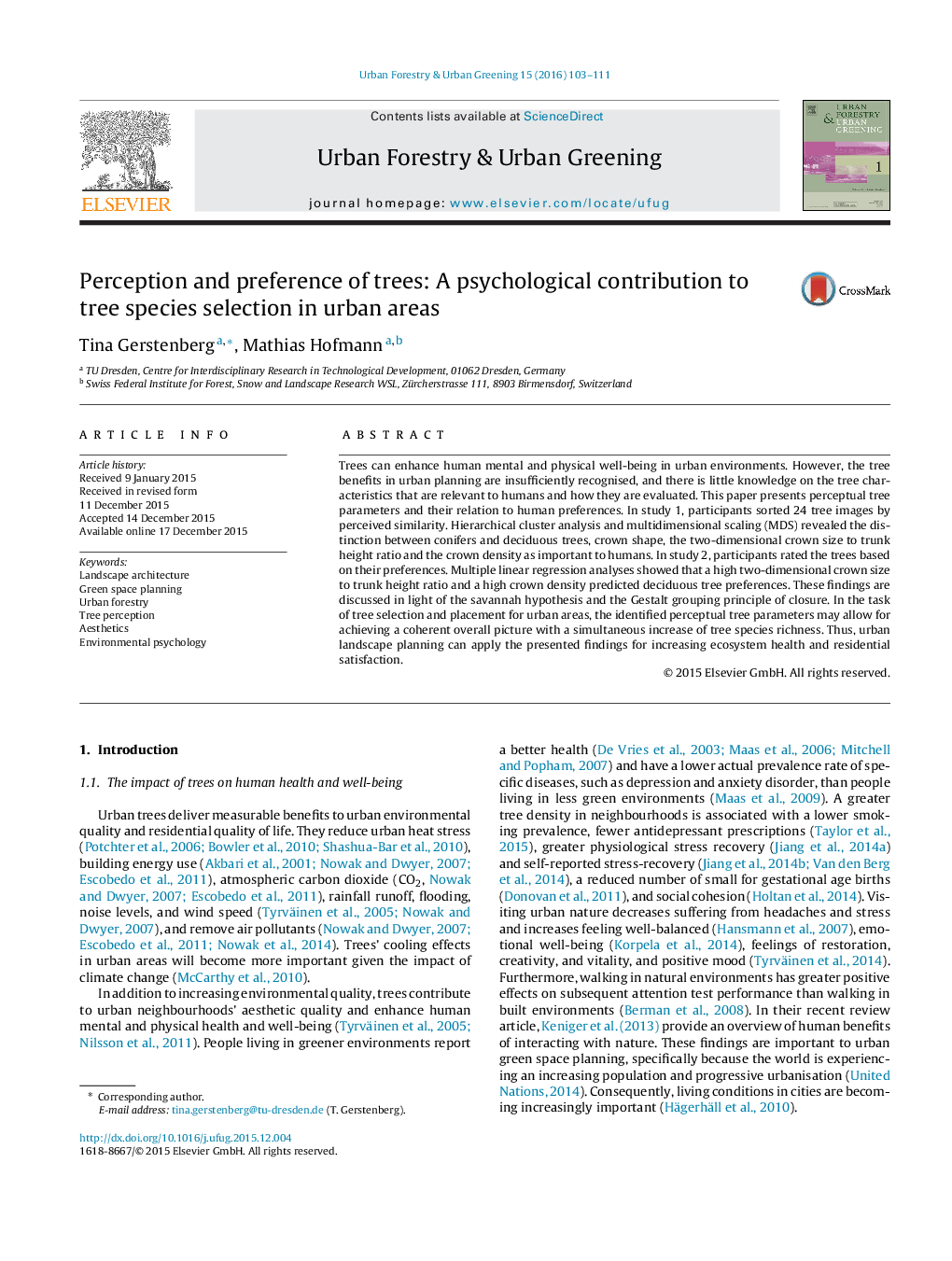| Article ID | Journal | Published Year | Pages | File Type |
|---|---|---|---|---|
| 93974 | Urban Forestry & Urban Greening | 2016 | 9 Pages |
•We identified tree features that are related to how humans perceive trees.•The distinction between conifers and deciduous trees is crucial.•Crown shape, crown size, crown density, and trunk height are also important.•Crown density and the crown size to trunk height ratio predict preference.
Trees can enhance human mental and physical well-being in urban environments. However, the tree benefits in urban planning are insufficiently recognised, and there is little knowledge on the tree characteristics that are relevant to humans and how they are evaluated. This paper presents perceptual tree parameters and their relation to human preferences. In study 1, participants sorted 24 tree images by perceived similarity. Hierarchical cluster analysis and multidimensional scaling (MDS) revealed the distinction between conifers and deciduous trees, crown shape, the two-dimensional crown size to trunk height ratio and the crown density as important to humans. In study 2, participants rated the trees based on their preferences. Multiple linear regression analyses showed that a high two-dimensional crown size to trunk height ratio and a high crown density predicted deciduous tree preferences. These findings are discussed in light of the savannah hypothesis and the Gestalt grouping principle of closure. In the task of tree selection and placement for urban areas, the identified perceptual tree parameters may allow for achieving a coherent overall picture with a simultaneous increase of tree species richness. Thus, urban landscape planning can apply the presented findings for increasing ecosystem health and residential satisfaction.
